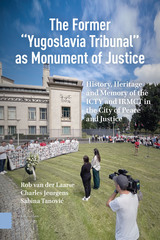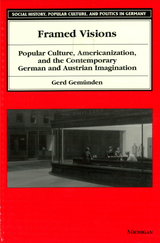5 books about Shaker

Constructing Space
Six Communal Religious Groups and Their Spatial Worlds
Martha Bradley Evans
University of Utah Press, 2025
Worldviews and experiences of place among noted religious communities
Religion transforms and inspires specific ways of living in the world. Through architecture and the built environment, members of religious communities communicate intangible beliefs about God, gender and family, the sacred and profane, and more. This captivating volume explores the spatial worlds of six different religious communities— the Latter-day Saints, the Oneida Colony, the Shakers, the Branch Davidians, the FLDS, and Adidam—through the architecture and cultural landscapes they built.
What does the strict order and regularity of a Shaker village tell us about the community’s hierarchies and relationships? How might a temple building site affect an LDS Church member’s daily life? Constructing Space reveals the hidden language of meaning, association, and identity that religious persons speak as they mold their faith into concrete forms, and how they interpret the meanings of those spaces within their practices.
Religion transforms and inspires specific ways of living in the world. Through architecture and the built environment, members of religious communities communicate intangible beliefs about God, gender and family, the sacred and profane, and more. This captivating volume explores the spatial worlds of six different religious communities— the Latter-day Saints, the Oneida Colony, the Shakers, the Branch Davidians, the FLDS, and Adidam—through the architecture and cultural landscapes they built.
What does the strict order and regularity of a Shaker village tell us about the community’s hierarchies and relationships? How might a temple building site affect an LDS Church member’s daily life? Constructing Space reveals the hidden language of meaning, association, and identity that religious persons speak as they mold their faith into concrete forms, and how they interpret the meanings of those spaces within their practices.
[more]
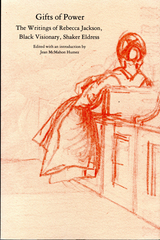
Gifts of Power
The Writings of Rebecca Jackson, Black Visionary, Shaker Eldress
Jean M. Humez
University of Massachusetts Press, 1981
A free black woman in antebellum America, Rebecca Cox Jackson (1795-1871) was an independent itinerant preacher and religious visionary who founded a Shaker community in Philadelphia that survived her death by twenty-five years. Gifts of powers containers her complete extant writings, covering the period 1830 to 1864.
[more]
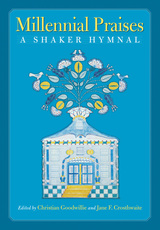
Millennial Praises
A Shaker Hymnal
Christian Goodwillie
University of Massachusetts Press, 2009
From the very beginning in the 1770s, singing was an important part of the worship services of the Shakers, formally known as the United Society of Believers in Christ's Second Appearing. Yet until the early nineteenth century, nearly all Shaker songs were wordless—expressed in unknown tongues or as enthusiastic vocalizations. Only when Shaker missionaries moved west into Ohio and Kentucky did they begin composing hymn texts, chiefly as a means of conveying the sect's unconventional religious ideas to new converts. In 1812–13, the Shakers published their first hymnal. This venture, titled Millennial Praises, included the texts without music for one hundred and forty hymns and elucidated the radical and feminist theology of the Shakers, neatly distilled in verse. This scholarly edition of the hymnal joins the texts to original Shaker tunes for the first time. One hundred and twenty-six of the tunes preserved in the Society's manuscript hymnals have been transcribed from Shaker musical notation into modern standard notation, thus opening this important religious and folk repertoire to modern scholars. Many texts are presented with a wide range of variant tunes from Shaker communities in New England, New York, Ohio, and Kentucky. Introductory essays by volume editors Christian Goodwillie and Jane F. Crosthwaite place Millennial Praises in the context of Shaker history and offer a thorough explication of the Society's theology. They track the use of the hymnal from the point of publication up to the present day, beginning with the use of the hymns by both Shaker missionaries and anti-Shaker apostates and ending with the current use of the hymns by the last remaining Shaker family at Sabbathday Lake, Maine. The volume includes a CD of historical recordings of six Shaker songs by Brother Ricardo Belden, the last member of the Society at Hancock Shaker Village.
[more]

Mother Ann Lee
Morning Star of the Shakers
Nardi Reeder Campion
Brandeis University Press, 2026
The definitive biography of Ann Lee, founder of the Shaker movement.
This acclaimed, accessible, and thoroughly researched biography documents the life of Ann Lee, a controversial, religious leader and early feminist figure. Lee established the Shaker movement in 1770 in Manchester, England. The core principles of the Shakers were radical: in an era when wives were the possession of their husband, Lee proclaimed the equality of men and women. The Shakers were dedicated to beliefs in absolute pacifism, equality of the sexes, absolute celibacy, and the cleansing of sin through dancing and chanting to shake away the past.
The Shakers sought inner peace and harmony, but their unusual beliefs, including total abstinence from sex and their exhibitions of mystical ecstasy were considered suspect and led to the imprisonment of Lee and her followers. While jailed, Lee experienced a blinding, soul-splitting vision which reaffirmed her belief in celibacy and named her the second coming of Christ. Seeking religious freedom, she led her followers, known as the United Society of Believers in Christ’s Second Appearing, from England to settle in upstate New York, near Albany.
Mother Ann Lee died in 1784, but her movement continued to grow into the nineteenth century with at least eighteen utopian Shaker communities in Kentucky, Maine, Massachusetts, New Hampshire, New York, and Ohio. Today many of those Shaker settlements are museums. The last remaining Shaker community is at Sabbathday Lake Shaker Village near Poland, Maine.
This acclaimed, accessible, and thoroughly researched biography documents the life of Ann Lee, a controversial, religious leader and early feminist figure. Lee established the Shaker movement in 1770 in Manchester, England. The core principles of the Shakers were radical: in an era when wives were the possession of their husband, Lee proclaimed the equality of men and women. The Shakers were dedicated to beliefs in absolute pacifism, equality of the sexes, absolute celibacy, and the cleansing of sin through dancing and chanting to shake away the past.
The Shakers sought inner peace and harmony, but their unusual beliefs, including total abstinence from sex and their exhibitions of mystical ecstasy were considered suspect and led to the imprisonment of Lee and her followers. While jailed, Lee experienced a blinding, soul-splitting vision which reaffirmed her belief in celibacy and named her the second coming of Christ. Seeking religious freedom, she led her followers, known as the United Society of Believers in Christ’s Second Appearing, from England to settle in upstate New York, near Albany.
Mother Ann Lee died in 1784, but her movement continued to grow into the nineteenth century with at least eighteen utopian Shaker communities in Kentucky, Maine, Massachusetts, New Hampshire, New York, and Ohio. Today many of those Shaker settlements are museums. The last remaining Shaker community is at Sabbathday Lake Shaker Village near Poland, Maine.
[more]
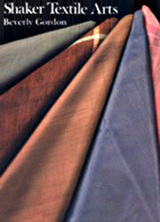
Shaker Textile Arts
Beverly Gordon
University Press of New England, 1982
Today we witness a steadily growing interest in the Shakers and their way of life, especially their crafts. Although Shaker furniture, architecture, and herbs, for example, have been written about repeatedly, there are no other studies in depth of another all-important element in Shaker lives--Shaker textiles. Beverly Gordon, an experienced craftswoman and teacher, presents a comprehensive, illustrated book on the kinds of textiles the Shakers used, how they were produced, and their cultural and economic importance to the communities. She shows how Shaker beliefs were manifested in the actual artifacts and integrates detailed technical information in a way that will appeal to the nonprofessional admirers of these crafts as well as to experts. Professional dealers may use the book to verify the authenticity of a variety of items. An introductory chapter is followed by sections on the general characteristics of the textiles, their importance in Shaker lives, and the types of textile activities they undertook. Textile production, including fiber preparation, spinning, weaving, dyeing, knitting, crocheting, and sewing, is examined. Detailed descriptions of rugs and floor coverings, chair and seat tapes and cushions, clothing and personal accessories, popular cloth, and fancywork are followed by appendices on original Shaker weaving drafts, analyses of rugs and chair seat tapes, dye recipes, and instructions for knitting and constructing “fancy” items. This indispensable reference work results in part from the author’s close association with Shaker textiles between 1973 and 1977, when she was a textile interpreter at Hancock Shaker Village. Since then she has had access to artifacts and original manuscripts and documents throughout the country, works that are reflected in her full bibliography. A study from the procurement and processing of materials to the uses of finished products, this is a book of lasting value to collectors and antique dealers, museum curators, home economists, historians, weavers, and fiber artists with related specialties.
[more]
READERS
Browse our collection.
PUBLISHERS
See BiblioVault's publisher services.
STUDENT SERVICES
Files for college accessibility offices.
UChicago Accessibility Resources
home | accessibility | search | about | contact us
BiblioVault ® 2001 - 2025
The University of Chicago Press


